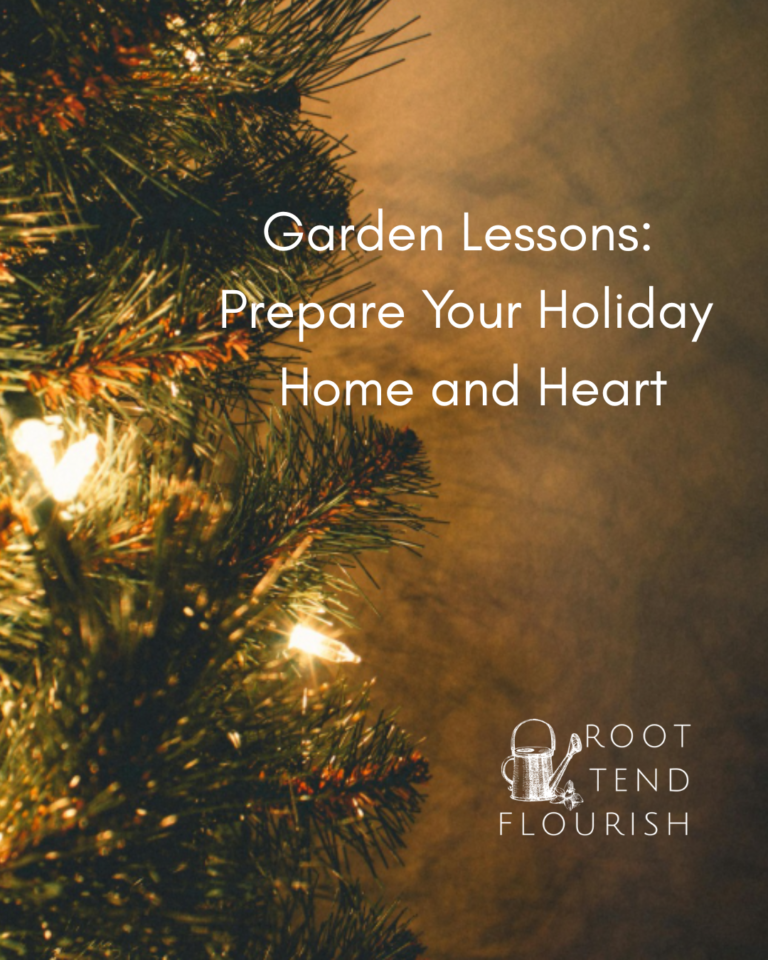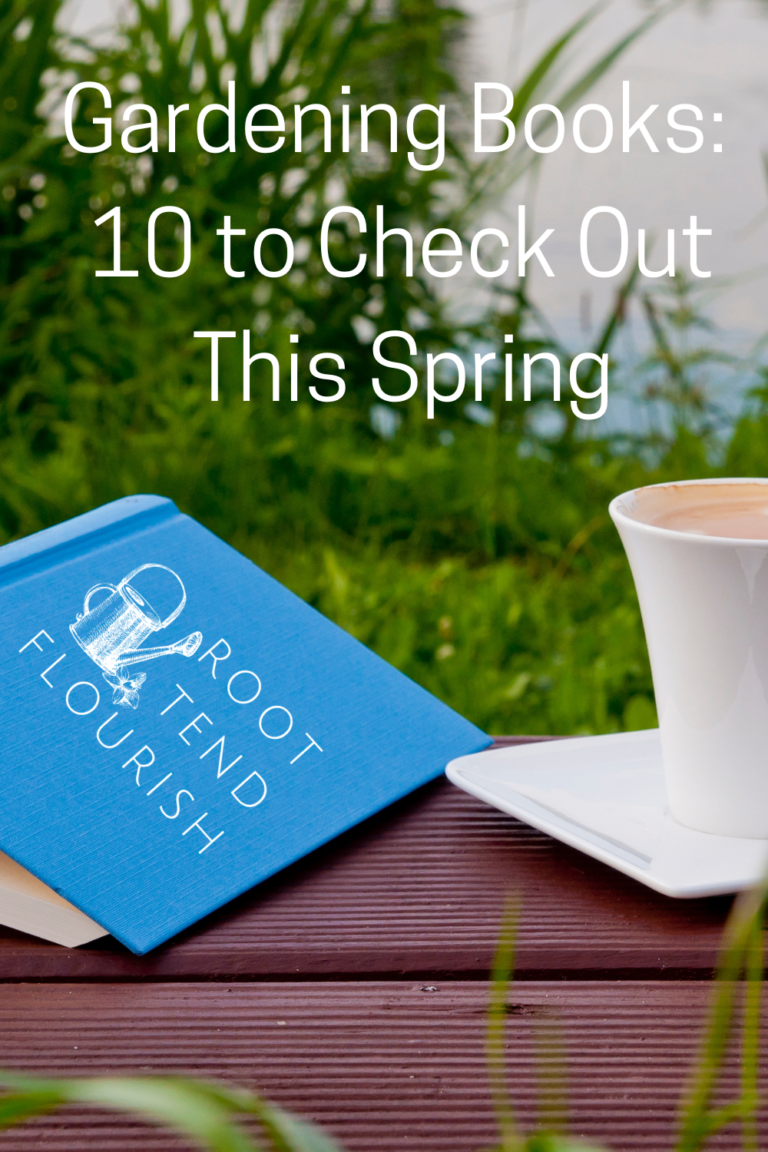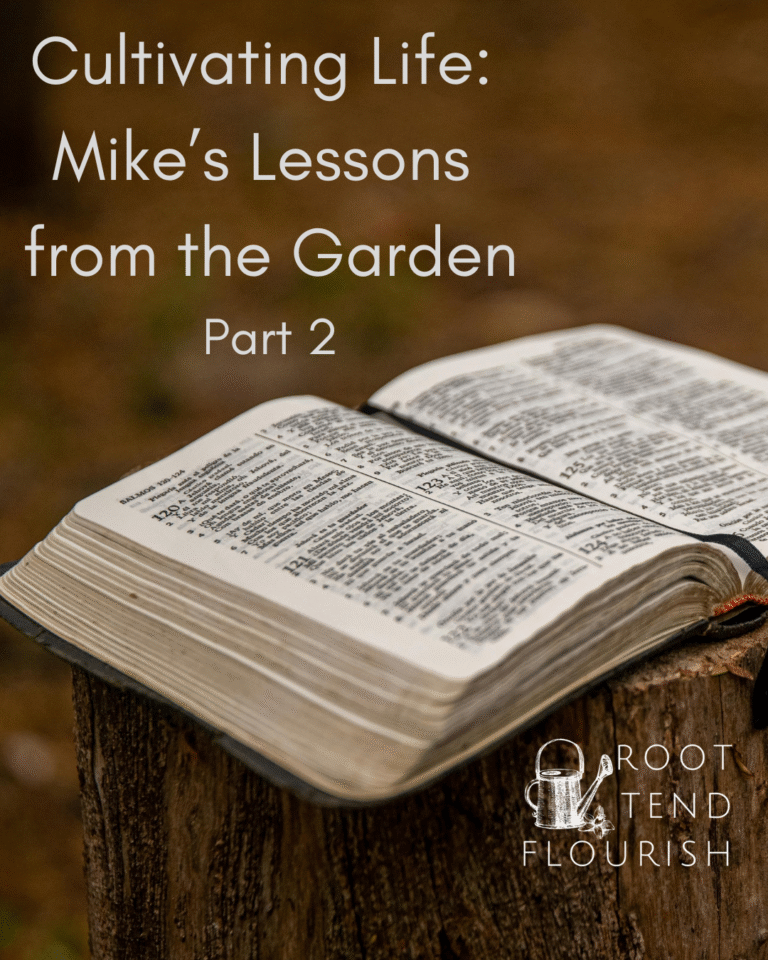Pruning For Life Part 1: How to Create Space for Flourishing
We’ve previously talked about why pruning is important in the garden. Today let’s carry these ideas out of the garden for a moment and into our everyday lives. Just like in the garden, intentional and targeted pruning every so often can lead to a fuller and healthier life. While we can go through our days taking things as they come, we also know our resources of time, attention, and energy (just to name a few) are limited. An important part of leading a fruitful life is thoughtfully choosing how we use those resources. Let’s take a minute and review why pruning in the garden is so important.
Pruning a plant is important for:
- Improving the health of the plant
- Creating fuller growth throughout
- Increasing flower and fruit production
- Developing a more desirable shape and form (now or in future growth)
- Creating space around the plant for other things to flourish
- Removing any hazardous branches that pose a safety issue
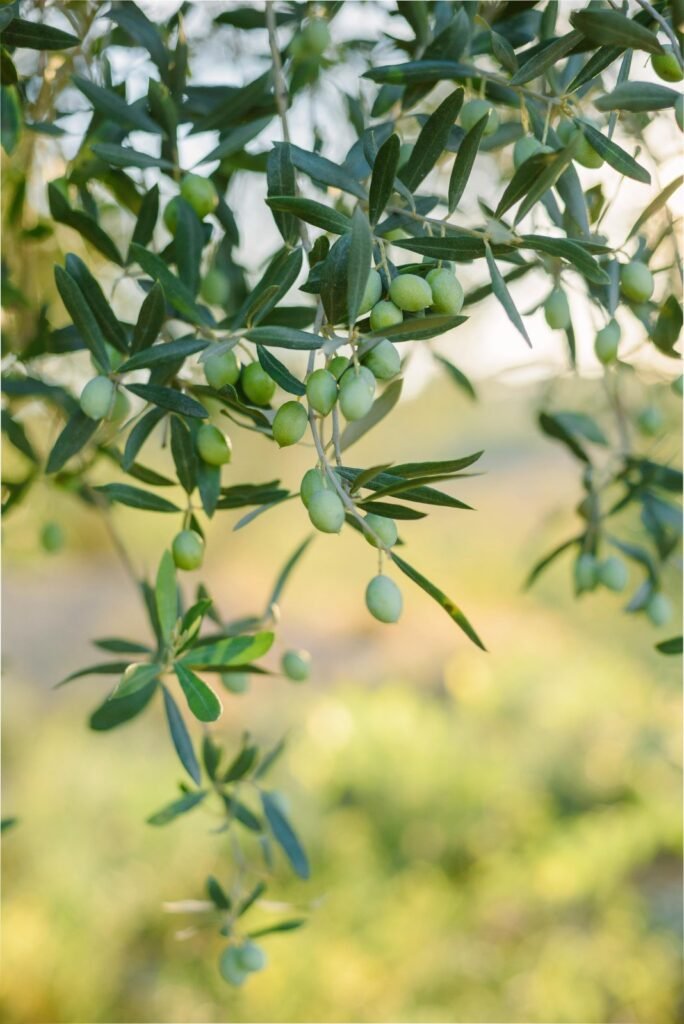
This post may contain affiliate links. Please read our disclosure policy.
Why Pruning in Your Life Matters
Many of the above purposes for pruning carry over into being a whole person. While the hustle and bustle of life can make us want to go, go, go that isn’t always the answer. At times, it can be more productive and healthier to slow down and assess your current state of affairs with questions like:
- Are there areas in my life getting stifled by constant busyness, clutter or excess?
- Do I have space for nourishment in my life?
- Have areas of unhealthy thinking, habits or lifestyle choices started to form?
- Do I have pockets of time for rest, connection with others, silence and solitude, and refreshing activities?
These questions may be hard to answer honestly and make take some time. But an honest assessment of your life (or a portion of it) is needed if you’re going to see growth and thriving down the road.
Vineyard Growth
This idea of intentionality with our life and what it’s producing is demonstrated in scripture in Isaiah 5. An analogy is used here to describe the strained relationship between God and his people (Israel). Israel is shown as a vineyard and God as the vinedresser. He provided all that was needed to produce a good harvest but, despite that provision, the vineyard did not produce good grapes. We can learn something from these verses about what was originally put in place to produce a good harvest and how, left untended, the vineyard eventually laid fallow and was destroyed:
Isaiah 5:1b-6 (AMP)
“My greatly Beloved had a vineyard on a very fertile slope (the promised land, Canaan).
He dug it all around and cleared away its stones,
And planted it with [a]the choicest vine (the people of Judah).
And He built a tower in the center of it;
And also hewed out a [b]wine vat in it.
Then He expected it to produce [the choicest] grapes,
But it produced only worthless ones.
“And now, says the Lord, O inhabitants of Jerusalem and men of Judah,
Judge between Me and My vineyard (My people).
“What more could have been done for My vineyard that I have not done in it?
When I expected it to produce good grapes, why did it yield worthless ones?
“So now let me tell you what I am going to do to My vineyard:
I will take away its thorn-hedge, and it will be burned up;
I will break down its [c]stone wall and it will be trampled down [by enemies].
“I will turn it into a wasteland;
It will not be pruned or cultivated,
But briars and thorns will come up.
I will also command the clouds not to rain on it.”
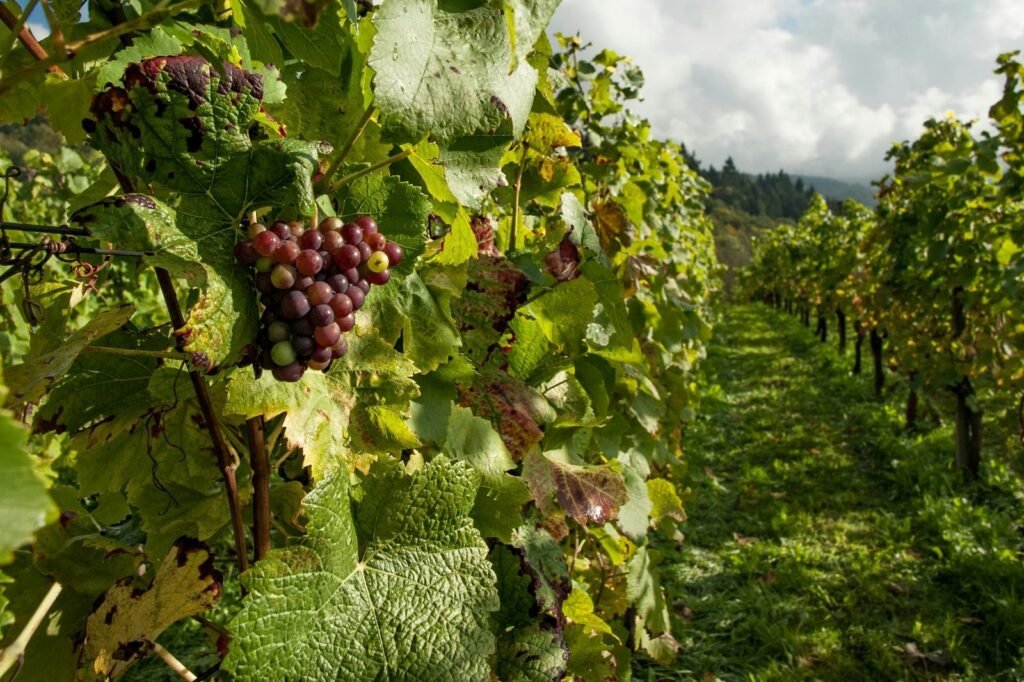
Vineyard Resources
When planning the vineyard, God put certain measures and resources in place. These resources are most visible by noting what he takes away (indicating they were there to start with): a healthy boundary (hedge and stone wall) which protects from outside threats and contains the growth within; regular pruning to direct the growth and resources to produce a good harvest; cultivation to removes briars, thorns and weeds that would choke out desired growth; rain to nourish, refresh and sustain the vine’s growth.
When these resources are removed or choked out by other things, the vineyard slowly dies and produces a poor harvest, if any harvest at all. Similarly, in our lives God has given us all the resources we need to have a fruitful life. While it’s his job to produce the harvest, it’s our job to consider how we’re using those resources. Now let’s dig into some pruning principles below and see how they apply to our everyday lives.
Pruning for Health: What areas of your life are struggling to thrive?
Take an honest look at the different areas of your life. How are they doing? Are they being sustained? Is steady growth happening? Are they struggling to thrive? Just like in the garden, if a plant has no light, it will eventually wither and die. This is especially important for the interior of the plant, so that as light reaches the middle area growth can happen from the inside out.
Big Tier Areas of Life
- Relationships (spouses, children, family, friends, community)
- Physical health and how your body is feeling
- Head space, thought patterns, and stress levels
- Hobbies and things you do for enjoyment
- Personal faith journey and soul care

Keep in mind, a plant isn’t necessarily growing in all directions all at once. The growth is often slow and steady. It ebbs and flow with the seasons and the availability of different nutrients. That’s to be expected in our personal lives as well. For example, there are seasons where we have limited time to invest in friendships. That’s ok and is part of life. But it can be helpful to keep a pulse on these areas. Then, as seasons change, these areas can get the care they need to start growing again.
Perhaps a first step is to consider an area that is struggling the most or causing the most strain. Is there a small step you can take to help that area start to grow? If you’re like me (type A raises hand) you’re likely already wondering how you’ll do this. We’ll jump into that next.
Pruning for Growth: Where do your resources really need to go?
When a shrub is left on its own, much of the energy of the plant goes towards growing as much as possible in all directions. This may not be healthy or sustainable in the long run. By pruning out excess branches, you allow those precious resources to be redirected to where it matters most. You’re targeting where and how you want the shrub or tree to fill in with new foliage. This principle carries over so clearly into our everyday lives. If we’re not intentional with our resources, they get dispersed in so many directions that they don’t have much impact. You can’t do everything all the time and do it well. Consider your resources and how you can use them intentionally for the season you’re in.
Big Tier Resources
- Time (work, family/relationships, free time, home care, serving)
- Money (budgeted and unbudgeted)
- Home space (for yourself and serving others)
- Brain power and thought life (conscious and unconscious thoughts)
- Energy (physical and mental)
- Personal belongings (things you actually use and things you simply accumulate)

Is there a resource that is completely consumed by one area of life? Or is there an area that’s underserved and needs more resources directed to it? For example, perhaps I feel disconnected on a weekly basis with my husband. How could I direct my resources to help with this? I could invest more time by blocking out one weeknight to intentionally spend with him. Perhaps money would help if I hired a regular babysitter for us to have a date night. Or let’s say I’m feeling drained and stressed pretty regularly. Perhaps I can use my time and energy better by going for a walk after dinner instead of watching mindless television.
Take a step back and consider what is consuming your resources. Are you directing them to the areas of your life that matter most? Can you make a small tweak with one resource that will move the needle in the right direction? Often times, small changes can have a big impact in the long run and are more sustainable.
Pruning for Harvest: How can simplifying lead to more productivity?
We previously went over how pruning can lead to improved production for plants. This is especially true for those that produce a harvest, such as fruiting trees or shrubs. By thinning out excess branches and excessive growth, we’re choosing where to target new growth to lead to a better yield. The same concepts can apply to our personal lives.
When our lives have unmitigated activity, we can feel like we’re just keeping all the plates spinning but not really making progress. Running in too many different directions can wear us out without really accomplishing much else. Consider what areas of your life are growing or are pretty full. Do other areas need to be simplified to allow these areas to flourish?
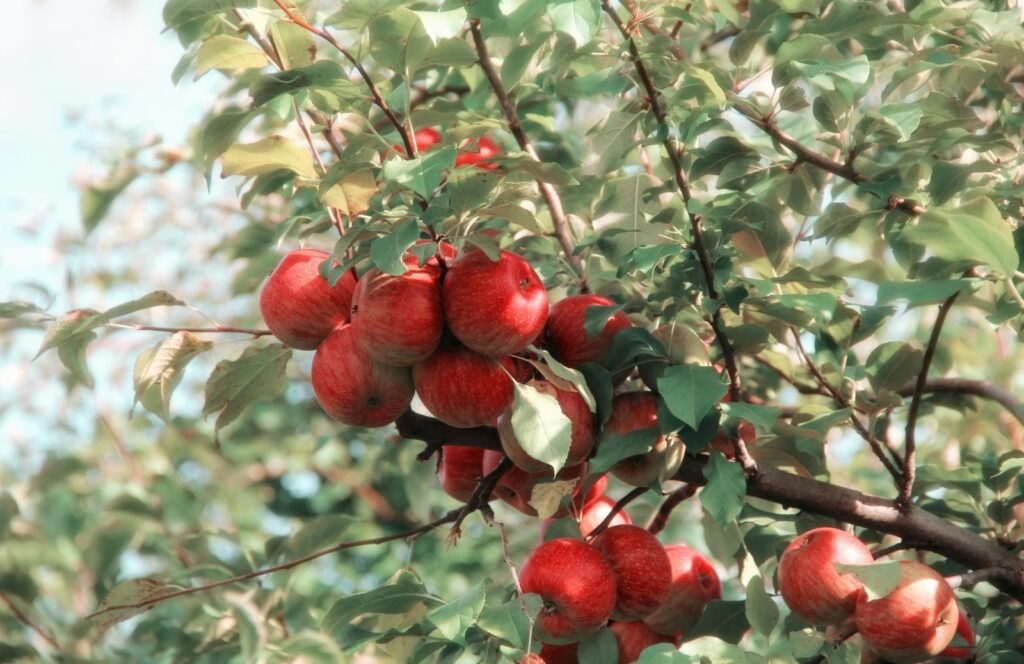
Perhaps it’s a busy season at work and you need to simplify (prune back) other areas of life. Maybe you need to limit social activities for a month or so or simplify your meals at home to create some space. There may be a regular meeting that you attend. In this season, you may need to step back from to have more evenings at home to care for a needy child.
If we want to see health and growth in the most important areas of life, we first need to identify what those areas are for the immediate season we’re in. Next, we need to assess what needs to be thinned out (either permanently or for a season) to allow us to focus on those critical areas. What are your top few areas of life that need regular attention and focus right now? What can you prune back to create more margin and space?
Wrapping Up
These questions may seem big and difficult to answer. Remember to start small and pick one question to answer. If thinking about all areas of your life is too complex, start with just one thing. Honest assessment and small changes lead to long term growth and improvement. We’ve covered a lot of ground so we’re going to wrap up this pruning talk for today. Coming up, we’ll consider the following reasons that pruning is worthwhile:
- Pruning for Shape and Form: What do you want your life to consist of?
- Pruning for Space: What boundaries need to be established?
- Pruning for Safety: What can be done to avoid burnout?
A Few Resources to Get You Started
- The Next Right Thing – Emily P. Freeman
- The Next Right Thing Guided Journal: A Decision-Making Companion – Emily P. Freeman
- Off the Clock: Feel Less Busy While Getting More Done- Laura Vanderkam
- The Ruthless Elimination of Hurry: How to Stay Emotionally Healthy and Spiritually Alive in the Chaos of the Modern World – John Mark Comer
- Habits of the Household: Practicing the Story of God in Everyday Family Rhythms – Justin Whitmel Earley
- The Lifegiving Home: Creating a Place of Belonging and Becoming – Sally Clarkson
- Simplicity Parenting: Using the Extraordinary Power of Less to Raise Calmer, Happier, and More Secure Kids – Kim John Payne
- Adorning the Dark: Thoughts on Community, Calling, and the Mystery of Making – Andrew Peterson
- Placemaker: Cultivating Places of Comfort, Beauty, and Peace – Christie Purifoy
Join us next time for part 2!

